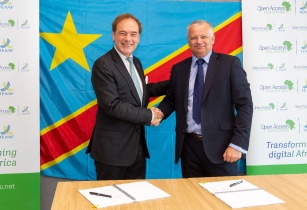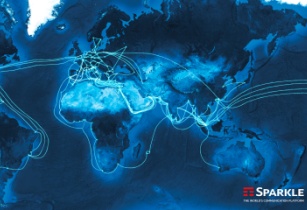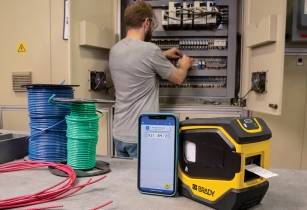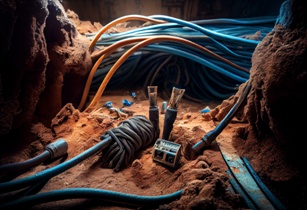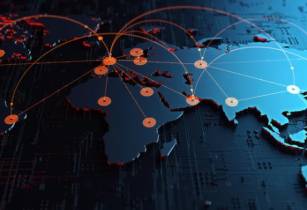Rick Perry explores the growing data divide and the global importance of providing businesses with reliable and secure bandwidth.
p style="text-align: left;">Rick Perry explores the growing data divide and the global importance of providing businesses with reliable and secure bandwidth.
Recently, we saw Somaliland’s President announcing that he thought his country could benefit from a rise in broadband penetration and access speeds if a new submarine cable agreement was put in place. He thought it would particularly benefit enterprises in the country.
Elsewhere, businesses in Australia will benefit from cheaper broadband prices once a new AU$450mn international cable is up and running between Australia, New Zealand and the United States in 2013, according to research from Ovum.
This news highlights the global importance of cabling solutions in providing businesses with reliable and secure bandwidth. The biggest factors driving the growth of international cabling solutions are primarily consumer-led demand for internet services and access to data.
As well as consumer demand, however, we want to ensure that there is enough capacity to meet the growing needs of enterprise. Satellite communications cannot guarantee the speeds needed to meet today’s demands. Even a slight delay in transmission and reception can be crucial in an environment such as electronic banking and trading where the odd millisecond is vital and any delay can be incredibly costly.
Our major multi-national customers demand a high level of reliability in their telecommunications services as they have become so fundamental to their businesses. Carriers, manufacturers, suppliers and installers are all looking at the alternatives available in order to ensure a robust communications network.
By far the most economically viable way to support the volume and bandwidth demand required across vast spans of ocean is by running cables along the ocean floor.
Demand from areas where there is currently not enough capacity or cabling, for example in East and West Africa, is driving growth across developing nations. The increasing demand on communications and internet services has driven investment in international connections in the region. New cables are being laid along the East African coast, largely in response to growing requirements for wireless services in Africa resulting from the demand on mobile applications.
Africa is one of the hot spots for international growth. The systems that were put in place over the past year or so are currently coming to fruition. By partnering with other industry players we are deploying one of the largest cable systems in the region, the West Africa Cable System (WACS), which is due for completion in 2011.
WACS will lay a new submarine fibre-optic cable that will link Southern and Western Africa to Europe with faster and more cost effective connectivity. Connecting to more than 13 countries, it will provide the first ever international submarine connections to Namibia, The DRC and Togo. Customers who were once reliant on satellite broadband connections to ensure their bandwidth requirements were met will benefit from reduced costs and an easier path to up-scaling bandwidth.
Our involvement in the consortium underlines a long history of investment in the African market, having laid some of the first submarine cables in the region more than 100 years ago. Africa is now at the forefront of the current acceleration of the submarine cable market, providing experienced global operators with new opportunities for growth and innovation.
While the benefits of using cabling are clear, network resilience still needs to be ensured. As these cables are laid in the middle of the ocean floor they may run over fault-lines, particularly in the Atlantic and Pacific Oceans, which could make them susceptible to damage from tectonic movements or earthquakes. Damage can also result from shipping accidents such as anchors and fishing nets moving or breaking the cables.
Modern cables, however, are designed to be robust and a considerable amount of work goes into determining exactly where they are laid to ensure they are secure and don’t run over extremely vulnerable areas or wrecks on the ocean floor. Nearer to the shore the cable is buried, where possible, to avoid any impact from shipping activity.
At Cable&Wireless Worldwide we utilise a number of cable solutions to ensure diversification of our submarine systems. This not only helps us to avoid breakages caused by both human disruption and natural disasters but to manage the impact of such unpredictable events should they occur.
We invest in up to five cable systems routed across any major geographies or oceans, which gives us the ability to divert traffic to other systems where necessary and to share capacity to avoid impacting service. This means that we have the most resilient communications solution for our customers at the best possible cost base.
We operate one of the largest next-generation networks (NGN) internationally, with 69 global cable systems contributing to over 500,000 km of fibre and connectivity to 153 countries, which is more than enough to wrap around the earth 12 times or to reach the moon. As our network grows, we are looking at a combination of terrestrial and submarine routes – with cables running over land from Hong Kong through China, and a submarine route across Japan to the USA.
The future of submarine cabling is an interesting one. Technology is improving at a rapid rate so that the bandwidth that can be delivered over existing cables is much greater. We are now able to move from 10 gigabytes to 40 to 100 without having to upgrade cables or replace those that are already laid. Fibre to the home and consumer bandwidth is also changing the dynamic of demand around the world, so is the use of data services with the advent of smartphones.
By Rick Perry, VP International Networks Planning and Engineering, Cable&Wireless Worldwide














